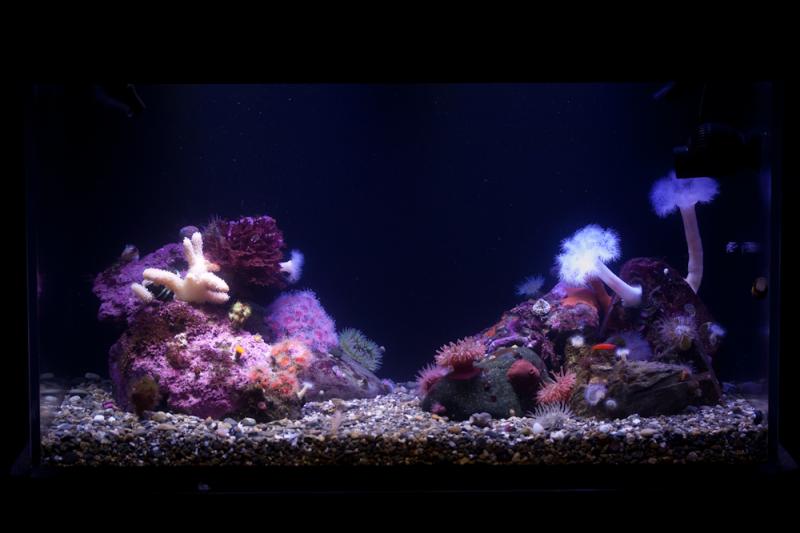With the increasing popularity of cold water marine aquariums, the livestock seen in these systems are no longer just limited to locally found specimens and are actually starting to come from all around the world. Case in point is this beautiful reef of Reef Central user Shoreliner11’s whose system, although located in Oregon contains livestock from four different countries in four different continents including: Australia, Japan, the United Kingdom, and of course Oregon. We’re sure this will put biotope purists to deep shame, but the increasingly diverse access to cold water reef critters from all around the world is undoubtedly exciting.
As is usual with cold water reef aquariums the beauty of this system lies not in the overall tank physique, but rather in the beauty of individual corals, fish and other critters. It is in closeup shots that this reef truely comes alive and mesmerizing. It still goes without saying that shoreliner11’s reef still has quite a bit of room to grow and mature, and thus we will be eagerly following the tank’s progression, but the spark of beauty if already there.
The main display is 62 gallons (235 liters) and measures 36 by 20 by 20 inches (91 by 61 by 61 cm). Along with a standard 20 gallon aquarium converted into a home made sump the total system volume comes down to around 80 gallons. A Mag-Drive 9.5 pump cycles water back from the sump into the display, while a Tunze Turbelle Nanostream 6015 provides extra flow within the display itself. A 1/5 hp JBJ Arctica Chiller keep the tank at a consisted 55-57 F degrees while the 1/2 acrylic minimizes “sweating”. For lighting a RapidLED DIY fixture with 24 cree LEDs is used, but the LEDs are generally turned down as low as possible to minimize algae growth.

Like any coldwater reef mechanical filtration is essential as biological filtration is slowed down to a point that it is almost useless. An oversized Reef Octopous XS160 Skimmer is thus used along with a Hydra Aquatics Biopellet Reactor and a NextReef MR1 reactor running RowaPhos. The RowaPhos within the NextReef reactor is occasionally switched with carbon. 15 percent water changers are done every week with natural salt water collected locally in Puget Sound. Feeding of the azoox inhabitants is done with an automatic feeding fridge, which feeds Reef Nutrition Phytoplankton, Rotifers, and Real Ocean Eggs throughout the day. The anemones are still spot fed every other day however with larger meaty foods.








